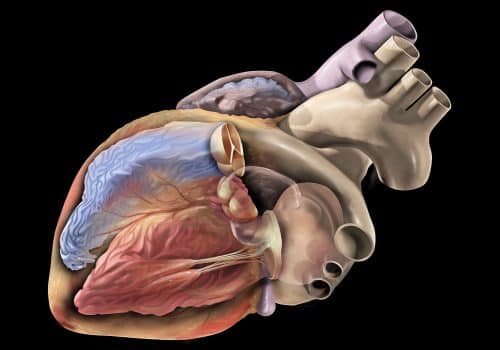The treatment is designed to restore damage to old scar tissue

In the days after a heart attack, patients who survived the attack and their loved ones can breathe a sigh of relief with the passing of the immediate danger - but the scar tissue formed during the prolonged recovery process can cause long-term damage. Often, the scar tissue impairs the heart's ability to expand and contract and thus pump and circulate the blood, which disrupts the heart's rhythm and ultimately causesHeart failure. A new experimental treatment may help restore a diseased heart to full function.
A team of scientists working in collaboration with commercial companies are trying to prevent damage to the heart or restore heart function damaged by exposure to a cocktail of Stem cells into the weakened heart. one of those companies, Mesoblast, based in Melbourne, Australia, is already conducting clinical trials in advanced stages, in which hundreds of patients suffering from chronic heart failure are being treated using Beginners - Partially differentiated stem cells - taken from hip bones of healthy donors. The company hopes to complete the registration phase in the coming yearA controlled clinical trial which will include a control group that will receive a sham treatment.
in early stage clinical trials conducted by the Mesoblast company, and published in the journal Traffic Research In 2015, it was found that patients treated by injecting the stem cell cocktail developed by the company no longer suffered from any problems related to heart failure.
If the new experiment planned by the company also yields promising results, the experiment will significantly advance the field of cellular therapy, which has long been subject to criticism. According to the claims, some studies conducted in Telom were not properly designed, were only partial, or lacked a comparison with a control group. And even worse, clinics around the world offer patients treatments whose effectiveness has not been proven.
Another company, TiGenix, based in Belgium, hopes to prevent the formation of scar tissue by treating patients with a mixture of Heart-derived stem cells Within seven days of the heart attack. A second phase of clinical trials conducted with this approach has recently been completed, but for now, the research findings have not been published.
Many questions still remain unanswered and it is still not entirely clear how stem cells - which usually originate from bones - can help find a cure for the heart. According to today's leading theories in this field, these stem cells may help treat inflammation, revive existing heart cells that have ceased to function or, alternatively, initiate a redistribution process of heart cells or promote the growth of new blood vessels, says Richard Lee, who heads The Cardiovascular Research Program at the Stem Cell Institute of Harvard University. Other scientists engaged in stem cell research, including Joshua Hare, who led the early stages of research at Mesoblast, and is the head The Interdisciplinary Institute for Stem Cell Researchat the University of Miami, says stem cells can work in many ways to heal scar tissue. According to Heyer, stem cells are expected to eventually be used asRegenerative treatment Real" that will give the heart the ability to regenerate and return it to full function.
